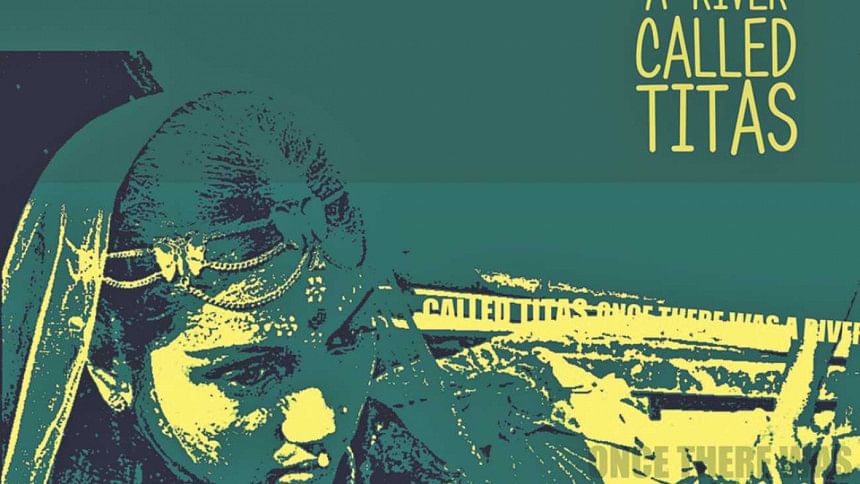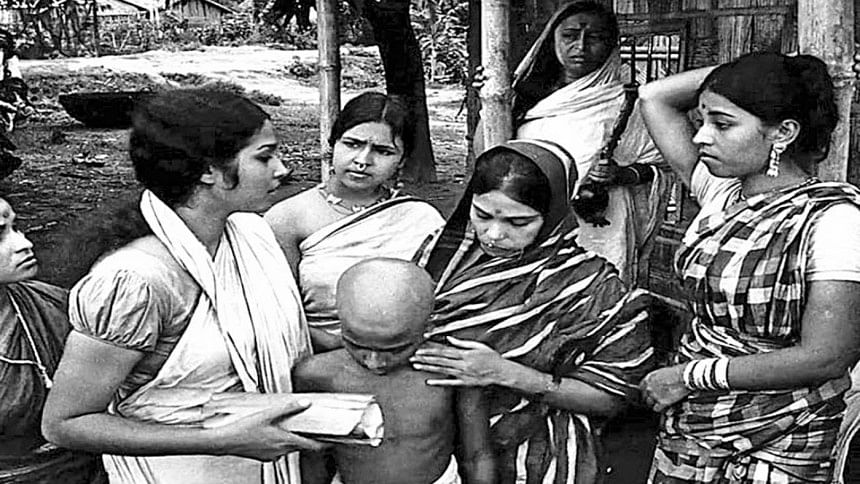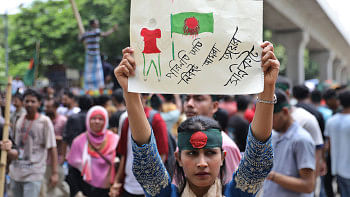Adaitwa Mallabarman - An author of the soil

Adaitwa Mallabarman became a renowned author in Bangla literature for his magnificent and unparallel work Titas Ekti Nadir Nam (A River Called Titas). Unfortunately, this path-breaking novel, in terms of representation of a local culture, was not published during the author's lifetime. Adaitwa was from Malopara fishermen community in the village called Gokorno under the former subdivision of Brahmanbaria. The novel was published in 1956 after 5 years of his death on the initiative of his friend Subodh Chowdhury who was a Professor of Bangla in Jadavpur University at that time.

Adaitwa became an orphan at an early stage of his life. His community members used to collect donations for him from fellow fishermen in order to cover the costs of his study at Annada Government High School in Brahamanbaria. Overcoming the odds, he obtained first division in the High School final and migrated to Kolkata in 1934. There he joined the Weekly Nobo Shakti as an Assistant Editor at that young age. Later he became the Editor of this renowned weekly. He wrote a number of articles and poems in his own name as well as in pseudo names, for reasons unknown. He had a keen interest in books on which he spent whatever was left after supporting his family, friends and acquaintances.
He also worked as a part-timer in different weekly and quarterly newspapers and literary journals like Mohammadi and Desh. Interestingly, seven chapters of his main work Titas Ekti Nadir Nam were published in a monthly called Mohammadi in 1946. Then the script was lost. Shada Hawa was the other published novel in 1948 in Sonar Tari, a magazine which was published as a book later in 1996 with the editorial notes of Achintaya Biswas. Adaitwa worked really hard to make a living and had little time to hang out with colleagues after work. He used to reach the office of Desh earlier than his peers and leave later much than them.
He also got a part-time job at Bishaya Bharati Prokashani. Perhaps it was due to all this hard work he caught tuberculosis. His friends admitted him into Kachrapara hospital for treatment. He returned home at Shastitala after being cured. In 1949 Desh published his translation of Arving Stone's novel Lust for Life (Jibon Trishna) in consecutive issues of the magazine till 1950. During then he became sick again as the TB relapsed. He finally passed away on April 16, 1952 at his home in Shastitala in Narkel Danga.
Apart from Titas Ekti Nadir Nam, his other works did not receive the recognition they deserved. He served Desh so diligently but none of his core prose writings was published there except for a few translated works. His novels Rangamati and Shada Hawa were discovered much later by other weekly and monthly newspapers. The long delay in publishing Titas indicates that critiques at that time were unable to appreciate his talent. Adaitwa, who belonged to the Malo fishermen community, was a victim of discrimination by the upper class elites. More than sixty years on after his death, only the Dalit Shahittya movement in West Bengal considers him as someone of their own, their vanguard.

It was very unfortunate that he had lost the manuscript of Titas Ekti Nadir Nam. Then he devoted all his energy to re-writing the entire novel as his friends encouraged and pestered him to do so. He left the manuscript with his school friend Professor Subodh Chowdhury before his demise. The Titas was published in 1956 and after its publication it appeared as one of the unparalleled and 'archetypes' in Bangladeshi literature. Surprisingly, it took his friends six long years to publish the novel. Perhaps, they were hesitant as the work of Manik Bandopadhyay (Padma Nadir Majhi) became so famous that no one would pay attention to Titas.
But when Manik adopted a philosophical outlook to create characters such as Kuber and Kapila, Adaitwa drew characters like Udaitara and Rajar Jhi from the real life and ornamented them with his creativity. He let the characters play their roles as if they were independent and created a story of their own. Adaitwa became more renowned when Utpal Dutta made an adaptation of the Titas Ekti Nadir Nam and performed it on stage with his troupe in 1963. In the early 70s, Ritwik Ghatak, the legendary filmmaker, made a film based on it. The fame of Titash thus spread beyond the literary world although people knew very little about him.
Adaitwa tried to grasp the life and surroundings of the members of the fishing community where he was born and brought up. He revealed the features and signs of the dying Malo culture by making an analogy with the dried up surface of the river Titas. His observations and hunch were proven right. It was an epic novel that contains local dialect, detailed descriptions of rituals and musical performances. The resilience of Malo culture, in terms of fighting natural and man-made barriers, was drawn by him with a fine brush. Not only the fishing community, he also drew the day-to-day life struggle of the farmers. The chapter on the Boat Race festival is very significant too. According to Shantanu Kaiser, a former Professor of English at Brahmanbaria College, Adaitwa viewed boat race as symbolic of life. Over the years, the Malo fishermen community was completely obliterated and a lot of them migrated to Agartala and Kolkata.

He also wrote poems many of which were published during his life time in a scattered way in different weekly and monthly literary journals which is probably why readers are not aware of his other works apart from Titas. In 1987 Shantanu Kaiser wrote a book titled Adaitwa Mollo Barman: Jibon o Shahittaya, which was published by the Bangla Academy. Later this book was published in Kolkata. Shantanu Kaiser came to Brahmanbaria as a lecturer in a College and started exploring facts related to Adaitwa. He interviewed some of Adaitwa's contemporary friends in Brahmanbaria and collected some of his correspondences with local authors and tried to draw on the struggle of an author who represented a marginalised, disadvantaged and culturally disappearing group. Shantanu's work attracted the attention of the people in both Bangladesh and Kolkata. Kolpana Bordhan translated Adaitwa's novel as A River Called Titas, which was published by the Penguin Books in 1992. This translation was done with a lot of care and the translator had conducted field work in Bangladesh in order to ascertain the meaning of local words and culture of Brahmanbaria.
Achintaya Biswas of Kolkata conducted research on Adaitwa and published his collective works. Israel Khan also collected some of his rare pieces from different sources. Pashchim Banga Matshojibi Samity was formed in 1969 in order to promote Adaitwa's work. As a follow-up Adaitwa Malla Barman Educational and Cultural Society was formed to encourage more research on him.
The folklore he collected from Tripura was compiled in a book in 1990. Not only to the general readers or literary critiques, Adaitwa's work is an inspiration to anthropologists at home and abroad for their ethnographic value. John Johansson, a young Swedish anthropologist came to Bangladesh in 1993 to conduct field work on rivers in Bengali cosmology. He intended to stay on the bank of Jamuna and rented a house there. Later, when he found out about Kolpana Bardhan's translation A River Called Titas, he quickly went to Brahmanbaria and stayed on the bank of river Titas instead.
While Titas exhibits the rural and the folk life, Adaitwa's other creation Shada Hawa represents just the opposite world where he drew an urban colonial landscape. I attended a seminar in Brahmanbaria in 1996 where Professor Achinta Biswas related Shada Hawa with magic realism, which was contentious as expressed by other discussants.
Adaitwa did not receive the recognition by the Bangla literary community while he was alive. Gradually his works were collected and published and people came to realise the range and depth of his creativity. Further research is necessary to interpret his life and work.
The writer is Dean, School of Liberal Arts and Social Sciences, Independent University, Bangladesh.

 For all latest news, follow The Daily Star's Google News channel.
For all latest news, follow The Daily Star's Google News channel. 



Comments